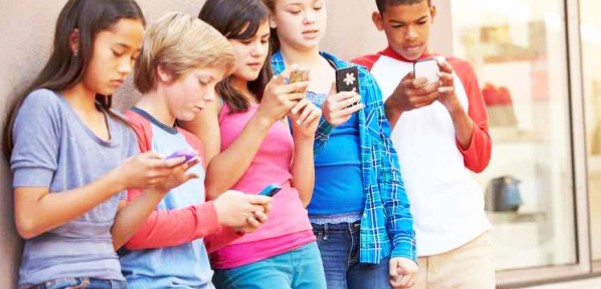By Priscilla West
Much has been written about our addiction to smartphones. We see obvious problems with people too focused on these ubiquitous devices – in parking lots and checkout lines, at bus stops and traffic lights. In time, experts will ascertain the effects on our brains, bodies, and personal skills. Eventually, lawmakers will strike a balance between individual freedom and public safety.
Meanwhile, seeing myself through my children’s eyes is powerful incentive to put down the rectangle.
Growing up, I saw my parents engaged in everyday tasks. I was usually just breezing through — but information was conveyed from eyes to brain nonetheless. Dad was holding aloft a section of newspaper. Mom was licking a stamp.
Our kitchen table’s chipped surface was the host “Operating System” for the planning “apps” of the time, always running in the background. As we kids traipsed by, dozens of times a day, a shifting array of tangible objects on the table hinted at the processes involved in organizing life. Day after day, month after month, year after year, we saw the machinations of running a household.
As the screen door slammed behind us, we might’ve had only a vague awareness that Mom was planning meals — but on some level, we were aware. We saw cookbooks open on the table, a shopping list jotted onto a notepad. We saw her writing menus, cross-referencing pantry contents, clipping coupons.
I do these things today— but my kids see Mom staring at the rectangle.
Once in awhile, my dad would spread a map over the table. We’d all lean in to see the planned route for a family trip. One summer, we watched as the yellow highlighter’s path wound all the way to the Grand Canyon. Dad pointed out the map’s scale, estimated the distance with a ruler, and quipped that at 65 mph we’d spend 5.5 glorious days squabbling in the back seat of the station wagon.
Now we plan trips, too — but our kids see Dad staring at the rectangle.
Certain items on the old kitchen table portended a less pleasant evening. Once a month, the checkbook and a stack of bills signaled us to tread lightly. We might be asked to fetch Dad a couple of Di-Gels, or a highball, or both. Stabbing at the calculator, he’d grumble that we could not possibly have used $50 worth of electricity or that the bank was getting greedy with its fees.
We still budget and pay bills — but our kids see Mom and Dad staring at the rectangles.
The kitchen was a touchstone accessible by every member of the family. The weatherman’s voice from a countertop TV told us about the cold front was moving in. The clock on the wall steadily tick-tocked toward dinner time. The calendar counted days until the next red-circled recital or birthday party, its block-lettered notes reminding, “Practice piano!” or “Mail invitations!” We crossed off squares — slash, slash, slash — as the days rolled by. Each pass over the worn linoleum conveyed information that kept us all on track.
Old fashioned? Perhaps. But from a child’s perspective, it was a more equitable sharing of information.
Smartphones have decluttered our kitchen tables and given back countless hours of our time, but imagine a child’s bewilderment at this world of information and responsibility swirling in the ether, unseen, unknowable.
I’m not advocating a return to paper-stacked kitchen tables, nor a rejection of helpful technology. However, if our children are to become responsible, functioning adults, we must occasionally put down the rectangles and explain to them what we’re doing.
Next vacation, pop into a gas station and buy a giant, paper map. Let your child unfold the vast expanse of our highway system. The tactile sensation of flattening out the map — your big, wrinkly hands pointing out features of the big, wrinkly terrain — these make lasting impressions.
Pull out an actual, paper checkbook if you still have one. Show your child how you subtract that $4 box of Girl Scout cookies from your account balance.
These things take mere minutes and they’re fun! More importantly, they give your child an advantage that you enjoyed — seeing and hearing the thought processes of the adults around them. There’s no app for that.

